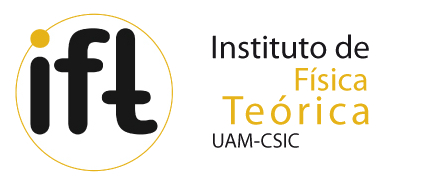Lectures on Supersymmetry and Supergravity in Curved Spaces and Superspaces
Home
LECTURES ON SUPERSYMMETRY AND SUPERGRAVITY
IN CURVED SPACES AND SUPERSPACES
By Prof. Igor Bandos (IKERBASQUE and UPV/EHU, Bilbao)
Supergravity, the supersymmetric generalization of of Einstein’s theory of gravity, is a fundamental tool in the current research in Theoretical Physics. Supergravity can be formulated in spacetimes of D ≤ 11 dimensions. The maximal D = 11 supergravity is the best known ingredient of M-theory. In D = 10 spacetime it describes the low energy limit of String Theory and in D < 10 of its compactifications. The recent interest in maximally extended N = 8 supergravity in D = 4 is due to its exceptional convergence properties and to the recent discovery of new gaugings which may provide new, more realistic, de Sitter-type scenarios. The simplest N = 1 D = 4 supergravity, in addition to
being the basis for promising phenomenological model building, is also interesting from other points of view: its off-shell formulation provides a basis to construct the supersymmetric gauge theories in curved spacetime, in particular the models on spheres to be solved using localization technique. Also the higher derivative extensions of simple supergravity are actively studied and used as a basis for cosmological models.
The goal of the present course is to provide certain level of familiarity with supergravity, so that, if reached, the researchers, besides understanding the general ideas, will be able to make explicit calculations using spacetime component and superfield methods in simple and extended superspaces. At the end of the course we intend to address some of the recent applications of the supergravity formalism(s) mentioned above. The lectures are
prepared mainly for black board presentations. The exercises include some instructive and important calculations.
- Venue: Institute of Theoretical Physics (IFT) UAM/CSIC, Madrid.
- Duration: 18 hours. 9 2-hour lectures (flexible), in 3 weeks (3 sessions/ week). The lectures will start every day at 15:00 and will be given in different rooms (“aulas”) each week (see the timetable with information on the different topics of the program to be studied each day).
- Addressed to: PhD students and researchers.
- Registration and fees: This course is supported by the Excellence Centers program and no fee is required. No support for those attending the course can be provided, though. Registration is required to all participants.
- Schedule:
Week 1 (in “Aula Gris I”)
Lecture 1. October 14: 1, 2
Lecture 2. October 15: 3.1-3.3(4)
Lecture 3. October 16: 3.4, 4.1-4.4
Week 2 (in “Aula Gris I”)
Lecture 4. October 21: (4.4,) 5.I.1a-c.
Lecture 5. October 22: 5.I.1c,d,e, 5.I.2a (b1-4)
Lecture 6. October 23: (5.I.2a) 5.I.2b1-4 (5.II)
Week 3 (in “Aula Audiovisuales”)
Lecture 7. October 28: (5.I.2b1-4), 5.II.1-4 ( ∗ 5)
Lecture 8. October 29: (5.II. 1-4) 5.II. ∗ 5, 5III.
Lecture 9. October 30: (5.III) 6.1, 6.2, ∗ ’s
- Program:
1. Introduction. SUSY in flat space(s) and superspace(s).
2. Supergravity in D=4 spacetime.
2.1. General relativity in differential form notation.
2.2 Rarita-Schwinger action and its ’pre-supersymmetry’.
2.3. N=1 supergravity and its local supersymmetry.
3. Supergravity in superspace. I. D=4, N=1 on the mass shell (‘on shell’).
3.1. Basic notions. Supervielbein, and spin connection of curved superspace, Bianchi
identities and constraints. Superspace diffeomorphisms and local spacetime su-
persymmetry.
3.2. On shell constraints in D=4 superspace. Bianchi identities and derivation of
equations of motion from superspace constraints. Dragon theorem.
3.3. Wess-Zumino gauge and component equations of motion.
3.4. Properties of the Wess–Zumino gauge (generic case).
4. Supergravity in superspace II. Higher N and higher D on the mass shell.
4.1. Supersymmetric gauge theory in D=4 and D=10 superspaces.
4.2. On shell constraints and equations of motion of D=11 supergravity.
4.3. On shell constraints and equations of motion of type IIA and type IIB D=10
supergravity.
4.4. On shell constraints and equations of motion of D=4 N=8 supergravity.
5. Off-shell formulations of supergravity.
5. I. Minimal off-shell formulation of supergravity.
5.I.1 Minimal supergravity in superspace.
5.I.1a Superspace constraints and solution of Bianchi identites. Auxiliary
fields and their supersymmetry transformation. Superspace form of the
supergravity equations of motion.
5.I.1b. Wess-Zumino gauge in superspace of minimal. supergravity; (First
terms in) decomposition of supervielbein and connection on fermionic
coordinates.
5.I.1c. Solution of the constraints. Prepotentials. Ogievetskij-Sokatchev
axial vector superfield, Siegel’s compensators.
5.I.1d. Supervolume of D=4 N=1 superspace as minimal supergravity ac-
tion.
5.I.1e. Wess-Zumino approach. Admissible variations of supervielbein and
spin connection. Superfield equations of supergravity.
5.I.2. Spacetime component description of minimal supergravity. Auxiliary fields
in supergravity action.
5.I.2a. Chiral projectors in superspace. Chiral form of the superfield super-
gravity action. Chiral superfield in curved superspace. Chiral density.
5.I.2b. Spacetime action with off-shell supersymmetry form the superspace
supergravity action.
5.I.2b.1 ”Ectoplasm method”.
5.I.2b.2 Curvature and gravitino field strength in Wess-Zumino gauge.
5.I.2b.3. Spacetime component action and its local supersymmetry
5.I.2b.4. Chiral density from ’Ectoplasm’.
5.II. ’Alternative minimal’ (”new minimal”) and other formulations of simple supergravity.
5.II.1. Super-Weyl-transformations in superspace and 3rd class constraints of
minimal, non-minimal and ’new’ minimal SUGRA. Chiral, complex linear
and real linear compensator superfields. Vanishing volume of the superspace
of ’new minimal’ supergravity.
5.II.2. Superfield actions for alternative minimal and nonminimal supergravity.
5.II.3. U(1) superspace. Alternative minimal supergravity in U(1) superspace.
5.II.4. Spacetime component action of alternative minimal supergravity.
5.II. ∗ 5. Special minimal supergravity and generation of cosmological constant.
5.III. Matter coupling to supergravity.
6. Recent developments and advanced topics ( ∗ ).
6.1. Supersymmetry in rigid curved (super)spaces.
6.2. Supergravity with higher derivative contributions: R + R 2 and others.
∗Conformal supergravity and conformal methods in supergravity.
∗Supergravity interacting with supersymmetric extended objects.
∗Vanishing volume of N=8 superspace.
∗Rheonomic appraoch to supergravity as ’bottom up’ version of the ’ectoplasm
method’
© 2012-2013 Institute for Theoretical Physics UAM - CSIC










